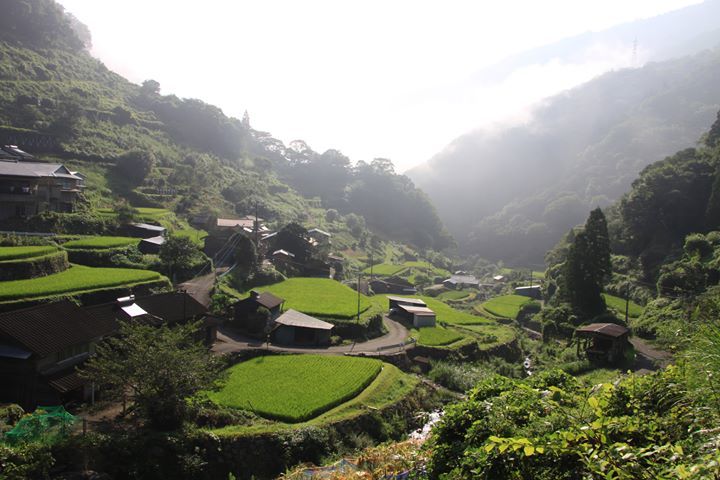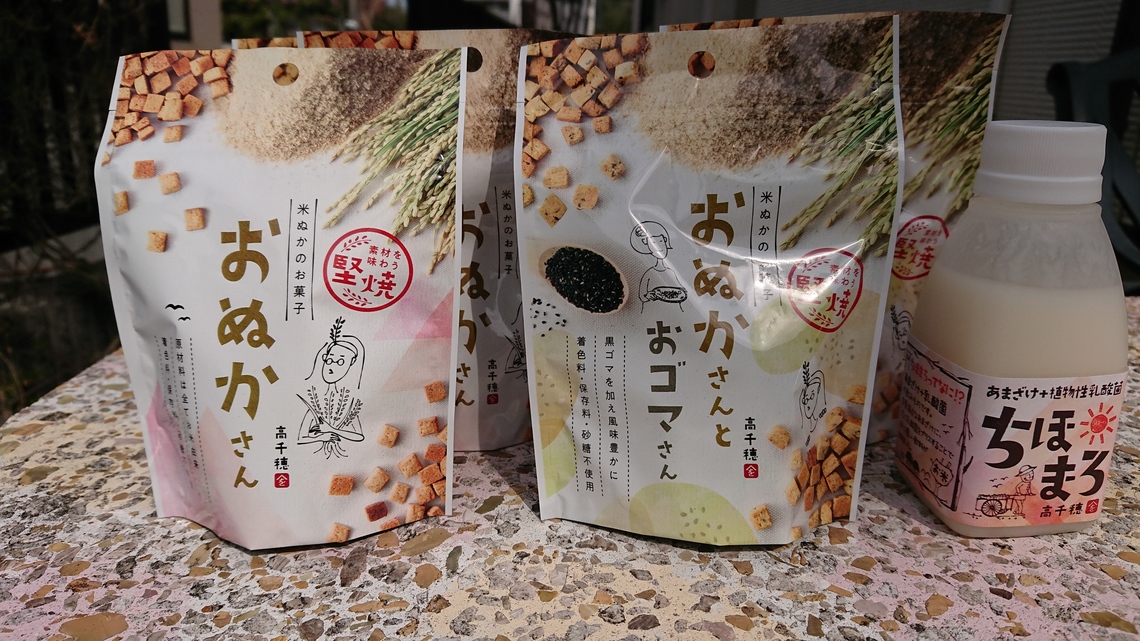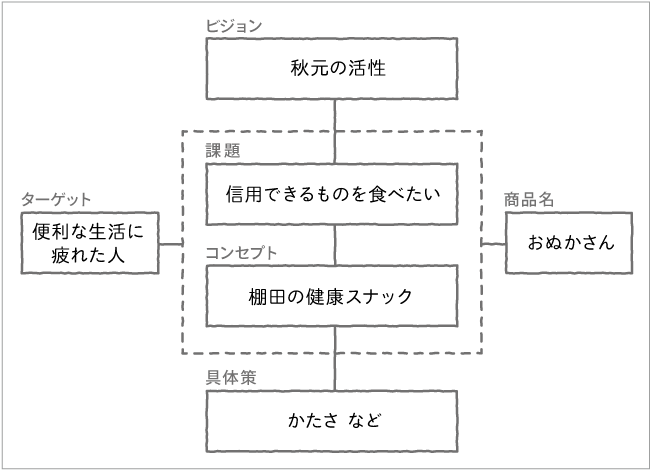Deep in the mountains of Takachiho, Miyazaki Prefecture. We received news from Mr. and Mrs. Saeki of the Akimoto settlement—home to 40 households and 100 people living quietly, featured in our 63rd installment—saying, "We've got a new product!" Apparently, it's a snack made from "rice bran." In this day and age, where you can click to order and have the product in your hands in just a few days, it's truly convenient, isn't it? We got some right away.
When you crunch and munch on the cube-shaped solid, a subtle sweetness spreads. It has a natural, simple flavor. It's much harder than egg cookies, but the quality of the sweetness is similar. As I found myself taking one bite after another, I thought about the development process.
What Saeki and his team aim for is revitalizing even marginal villages like Akimoto—settlements threatened by depopulation and aging—through business power. They have a clear desire to spread the appeal of their hometown through their products.
The first hit product developed for this purpose is "Chihomaro." It's a health drink made by double-fermenting amazake—crafted from rice carefully cultivated in the village's terraced fields and spring water from the Morotsuka Mountains—using lactic acid bacteria. Despite the challenging location—30 minutes to Takachiho at the base, 60 minutes to Nobeoka, and nearly 2 hours to Miyazaki City—they persevered with steady sales development. Now, they have over 200 clients and annual sales approaching 100 million yen.
Organizing it using a cross-frame approach gives this structure: "A healthy beverage from terraced rice fields" addresses the desire of "people tired of convenient lifestyles" to "consume trustworthy products" through "Chihomaro," a lactic acid bacteria and koji-based health drink. This aims to "revitalize Akimoto." Other businesses also sell lacto-fermented sweet rice drinks. However, many people specifically choose "Chihomaro" because it's made from rice grown in terraced fields—nurtured with care in an area blessed with abundant water and extreme temperature variations—and because it embodies the philosophy of revitalizing a declining village.
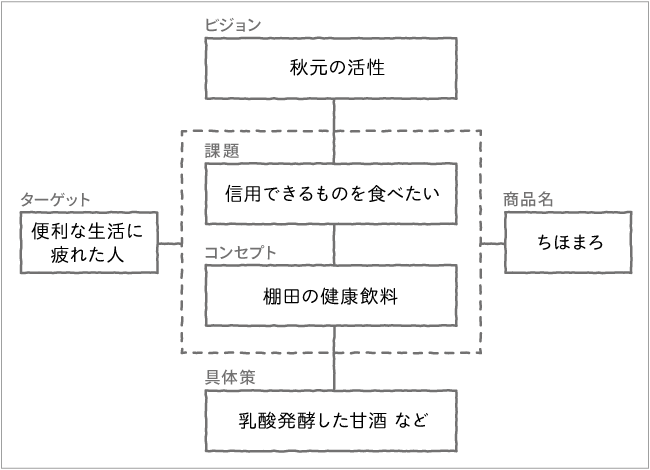
Yet producing sweet rice wine creates a byproduct: rice bran, an inevitable result of milling rice. While some was spread as fertilizer in the fields, as Chihomaro's sales grew, this alone became insufficient for disposal. Rice bran is known as the most nutrient-rich part of the rice grain. The development began with the question: Could we somehow make this part naturally enjoyable?
Development began with the concept of a "healthy snack from terraced rice fields." The biggest hurdle, however, was the "rice" itself as a raw material. Pursuing the "softness" found in popular products inevitably required relying on eggs or baking powder. However, that would defeat the concept. Through persistent effort, we created a product characterized by its "firmness," made entirely from rice ingredients: rice bran, rice flour, rice syrup, and rice oil (of course, additive-free and unsweetened).
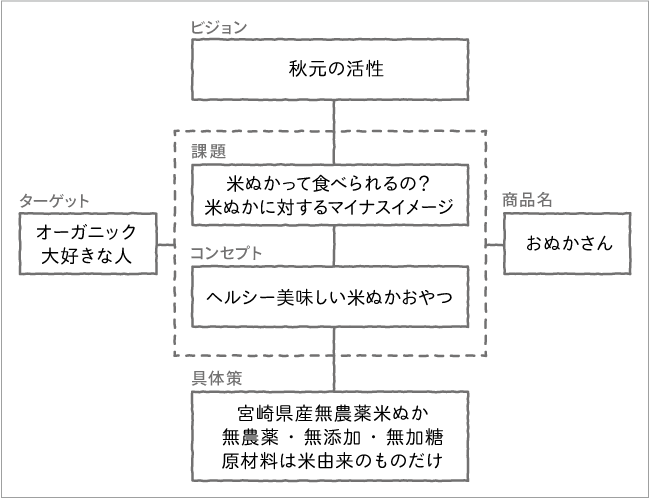
Actually, Mr. Saeki and I were colleagues at the Miyazaki Food Academy, where we discussed product development extensively. That's why he utilized the cross-frame method again during this development. Before I heard the actual story, I wrote down what I imagined, and when I compared it to what Mr. Saeki used during development, they were almost identical. That's how clear the characteristics are. Compared to the hit product "Chihomaro," there's significant overlap, especially since they share the same target audience. This suggests potential for expanding sales through existing distribution channels.
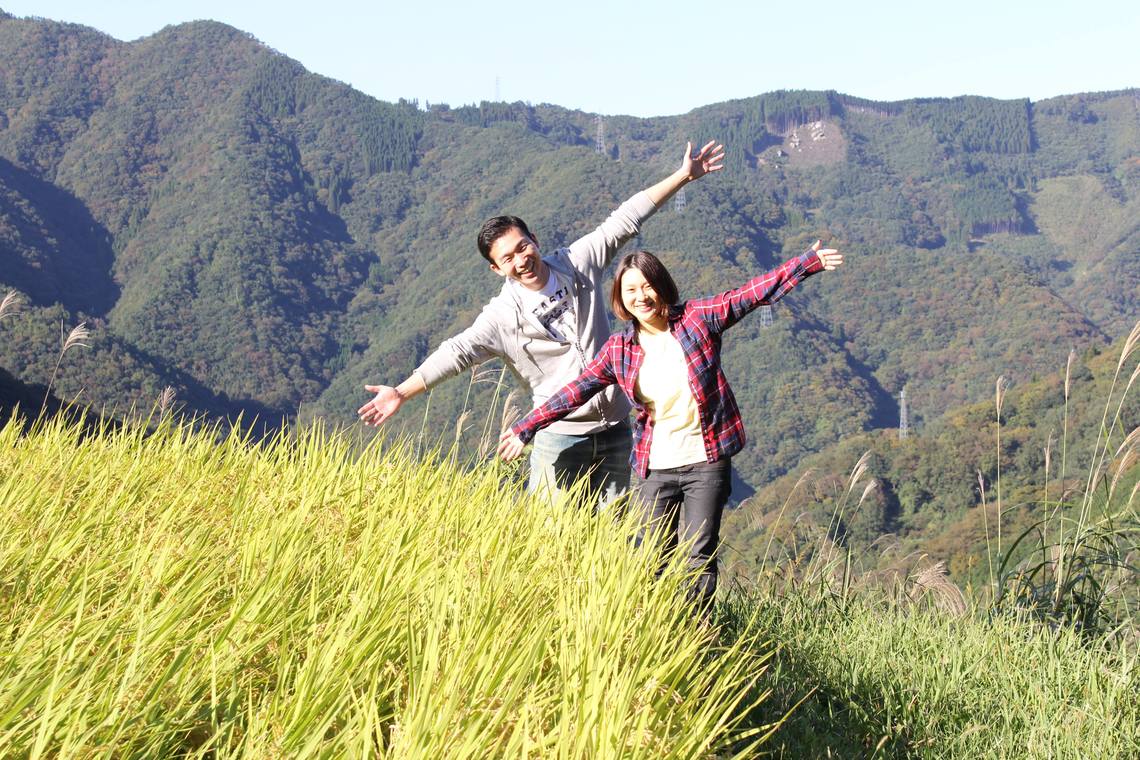
Mr. Saeki initially worried about its firmness, but that very texture expresses simplicity and sincerity. At the same time, for someone like me who tends to wolf down meals, the fact that you need to chew slowly to savor it is actually healthy. This is a masterpiece born from staying true to its vision and concept, not pandering to the trend of softness. It's available not just in Miyazaki, but popping up here and there nationwide. If you happen to see it, please give it a try.

Enjoy!

